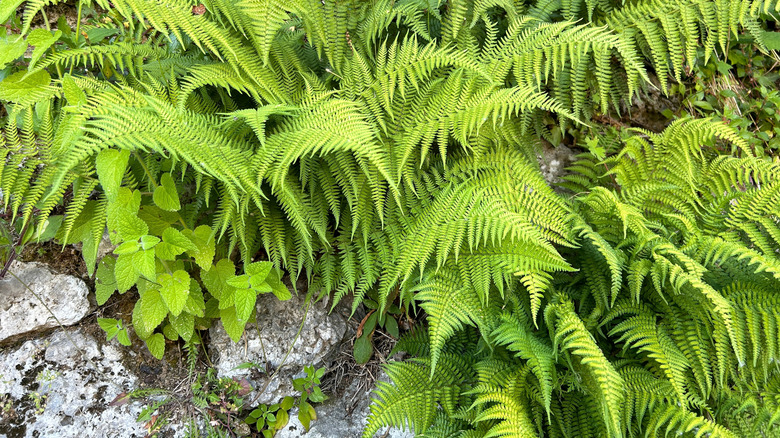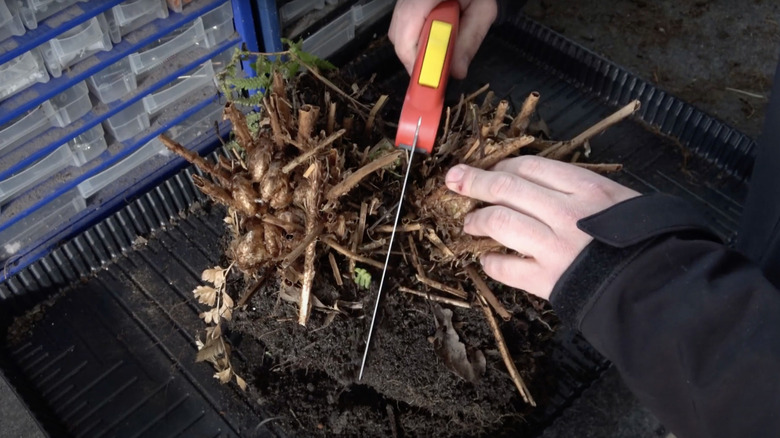What To Know Before Dividing Ferns To Fill In Bare Garden Patches This Fall
When we think of full, lush plants, ferns often top the list. Their sprawling fronds are associated with dark, deep woods, rainforests, and cool temperatures. In our yards, they fill in rock gardens and shaded nooks with color and texture, and they're a great option to plant near an outdoor waterfall or backyard stream.
There are more than 12,000 species of ferns, with care for assorted fern plants being somewhat similar. The lady fern (Athyrium filix-femina) is known to be one of the more tolerant varieties because it can survive in drier soils than other ferns, and could also handle full sun if the soil is kept moist. It's hardy in USDA Hardiness Zones 4 to 8, thriving best in rich, damp, well-drained soil in part to full shade.
One of the best characteristics of ferns — including lady ferns — is that they can be easily divided. This means saving money and a trip to the nursery if you have an abundance of them and need to fill bare patches in your garden. Fully grown, their average height is 1 to 3 feet and their span is about 1 to 2 ½ feet wide. When dividing ferns, the timing is essential. Do this in either the spring or the fall to give the roots time to settle in and establish themselves before the extreme temperatures of summer heat or winter cold.
How to divide and replant lady ferns
Not sure if you should divide in the spring or the fall? Think about your area's overall climate and follow the same guidelines as you would for when to plant ferns. If your winters are exceptionally rainy and cold, divide your lady fern in the spring. This way, you avoid the risk of freezing your plant or leaving it susceptible to root rot. In warmer areas, opt for a fall division, so you don't have to worry about leaving your fern vulnerable to heat and dry soil.
Before digging up the fern, consider trimming back the fronds. This will give you less foliage to work around, and is beneficial for the plant. With less foliage to upkeep, the newly divided fern will be able to focus on root development, which is what we want. After uprooting the fern, use a sharp, clean knife or hand saw to split the rhizome — the part of a fern plant that sends out roots — either in half or in quarters. Then split up the pieces and plant each one in its own hole.
When planting the divided ferns, it's important to align their crowns with the soil level. The new growth of lady ferns forms on top of the old, resulting in their crowns being pushed upward and above the soil level over time. Exposed crowns put the plant's roots at risk of drying out, freezing, or not getting enough nutrients from the soil. Make sure that the roots and soil remain moist for the first few weeks, especially if your area isn't getting consistent rain.

